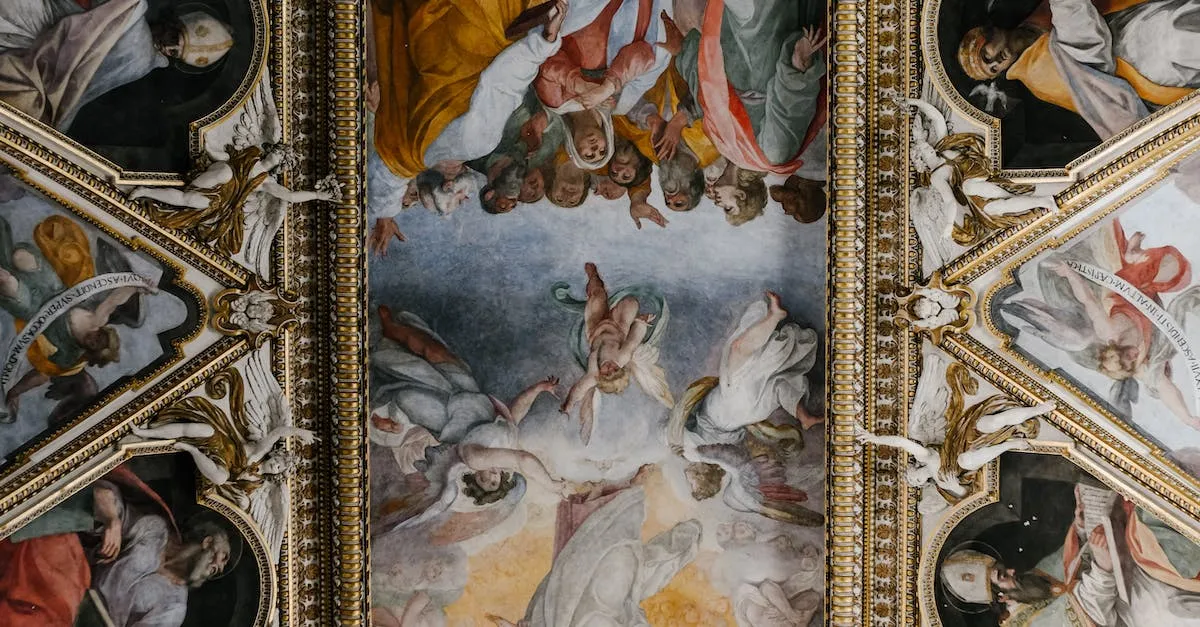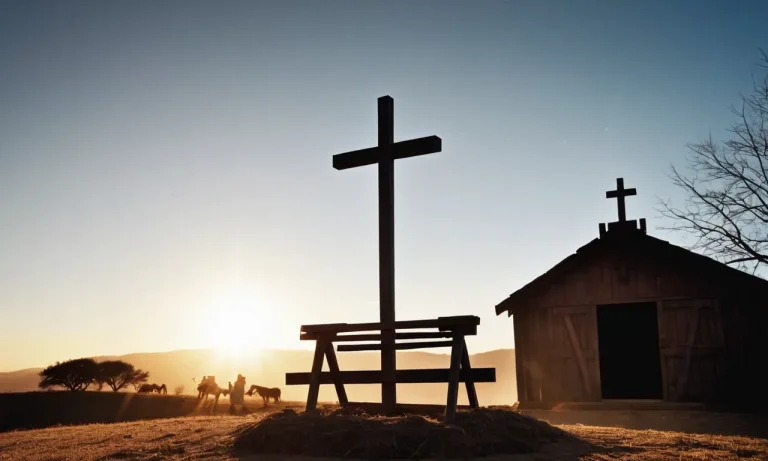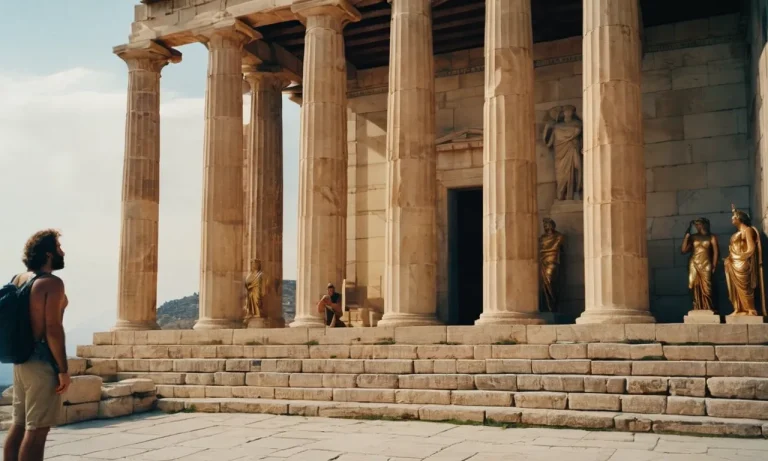What Is The Oldest Christian Religion? Tracing The History Back To Jesus
With over 2 billion adherents today, Christianity is the world’s largest religion. It’s also incredibly diverse, consisting of thousands of denominations and sects that have developed over the faith’s 2000 year history. But where did it all begin?
If you’re wondering which Christian religion is the oldest, you’re not alone. In this comprehensive guide, we’ll trace the origins of Christianity back to Jesus himself to identify the oldest traditions still practiced today.
If you’re short on time, here’s a quick answer: Based on historical records, the oldest extant Christian religions are the Eastern and Oriental Orthodox churches, which split from the Roman Catholic Church in 1054 AD.
By examining key events like the legalization of Christianity, the earliest church councils, the East-West Schism, the Protestant Reformation, and more, we’ll uncover the roots of today’s Christian landscape.
Whether you’re on a quest to find the original church or just want to learn about the most ancient Christian practices, this extensively-researched article will walk you through the fascinating history.
The Early Church in the Apostolic Era
When discussing the oldest Christian religion, one must trace its history back to the early church in the Apostolic Era. This era refers to the time immediately following the life and ministry of Jesus Christ and the apostles who spread his teachings.
It was during this time that the foundation of Christianity was laid, and the early church began to take shape.
Christianity’s Foundation in Jesus
The early church traces its origins to Jesus Christ, who is considered the founder of Christianity. Jesus, believed by Christians to be the Son of God, preached a message of love, forgiveness, and salvation.
He gathered a group of disciples, including the twelve apostles, who became the primary leaders of the early church after his death and resurrection.
Jesus’ teachings and actions during his ministry formed the core beliefs of the early Christian religion. His miracles, parables, and sermons provided a guide for the early church in understanding and spreading his message.
The life, death, and resurrection of Jesus became the central focus of Christian faith and worship.
The Early Church in Jerusalem
After Jesus’ ascension, the early church began to take shape in Jerusalem, where the disciples and followers of Jesus gathered. The book of Acts in the New Testament describes the early days of the church, highlighting the importance of the apostles’ teachings, communal living, and the sharing of resources among believers.
The early church in Jerusalem faced both internal and external challenges. Internally, they had to navigate issues such as the inclusion of Gentile believers, the role of Jewish customs and traditions, and the establishment of leadership structures.
Externally, they faced persecution from Jewish religious leaders and the Roman Empire, which saw Christianity as a threat to its authority.
The Spread of Christianity in the 1st Century
Despite the challenges, Christianity began to spread rapidly in the 1st century. The apostles played a significant role in this expansion by traveling to different regions and preaching the gospel. The conversion of Saul of Tarsus, who later became known as the apostle Paul, also contributed greatly to the spread of Christianity.
The early Christian communities established churches in various cities throughout the Roman Empire, including Antioch, Ephesus, and Rome. These churches became centers of worship, teaching, and fellowship for believers.
As Christianity spread, it encountered diverse cultures and religious traditions, leading to the development of different Christian communities with unique practices and beliefs.
Early Church Writings and Leadership
During the Apostolic Era, the early church produced a significant body of writings, including the letters of Paul, Peter, and other apostles. These writings, collected in the New Testament, provided guidance and instruction for the growing Christian communities.
They addressed theological issues, offered pastoral advice, and encouraged believers to remain faithful to the teachings of Jesus.
In terms of leadership, the early church operated under the authority of the apostles and other appointed leaders. The apostles served as the primary teachers and overseers of the churches, while other leaders, such as elders and deacons, assisted in the day-to-day affairs of the community.
This leadership structure helped maintain unity and provided guidance for the early church as it faced various challenges.
Understanding the early church in the Apostolic Era is crucial in tracing the history of the oldest Christian religion. It was during this time that the foundation of Christianity was established, and the teachings of Jesus began to spread throughout the world.
By exploring the early church’s origins, growth, and writings, we gain insights into the development of Christian faith and its enduring impact on society.
The Legalization, Councils and Rise of Christendom
The journey of Christianity from its humble beginnings to becoming one of the world’s major religions is a fascinating one. This article will explore the key events and developments that shaped the history of Christianity, tracing its origins back to Jesus.
Legalization Under Constantine
One of the most significant turning points in the history of Christianity was the legalization of the religion under Emperor Constantine in the 4th century. Prior to this, Christians faced persecution and were forced to practice their faith in secret.
Constantine’s Edict of Milan in 313 AD granted religious freedom to Christians and marked the beginning of a new era for the faith.
This newfound freedom allowed Christianity to flourish, leading to the growth of Christian communities and the establishment of churches throughout the Roman Empire. It also paved the way for the subsequent development and definition of Christian beliefs.
Defining Beliefs through Church Councils
With the legalization of Christianity, theological debates and disagreements began to arise within the Church. To address these issues and establish a unified set of beliefs, various Church Councils were convened.
One of the most notable Church Councils was the Council of Nicaea in 325 AD, which was called by Emperor Constantine. This council aimed to settle the controversy surrounding the nature of Jesus Christ and resulted in the formulation of the Nicene Creed, which is still recited by many Christians today.
Other important Church Councils, such as the Council of Ephesus in 431 AD and the Council of Chalcedon in 451 AD, further clarified and defined key doctrines of Christianity, including the nature of Christ and the concept of the Trinity.
The Bishop of Rome and the Roman Church
As Christianity continued to spread and develop, the Bishop of Rome, also known as the Pope, played a significant role in the growth and influence of the religion. The Roman Church, with the Pope as its spiritual leader, became a central authority within the Christian world.
The authority and primacy of the Bishop of Rome were solidified over the centuries, leading to the establishment of the Roman Catholic Church. This branch of Christianity has its roots in the early Christian community in Rome and has remained a dominant force within Christianity to this day.
Christendom in Europe through the Middle Ages
During the Middle Ages, Christianity became the dominant religion in Europe, and the concept of Christendom emerged. Christendom refers to the cultural and political influence of Christianity in medieval Europe.
Christianity played a central role in the lives of people during this time, shaping their beliefs, values, and social structures. The Church held immense power and authority, with the Pope acting as the spiritual leader of Christendom.
Religious practices, such as pilgrimages, the veneration of saints, and the construction of magnificent cathedrals, became integral parts of European society. The influence of Christianity extended into various aspects of life, including art, literature, and education.
The East-West Schism and the Birth of Orthodoxy
The East-West Schism, also known as the Great Schism, was a significant event in the history of Christianity that led to the birth of Orthodoxy. It occurred in 1054 and marked the formal split between the Eastern and Western branches of Christianity.
The schism was the culmination of growing theological and political divisions between the two regions.
Growing Theological and Political Divisions
Throughout the early centuries of Christianity, theological and political differences emerged between the East and the West. These differences were often influenced by cultural and linguistic factors as well.
Theological disputes, such as the debates over the nature of the Holy Trinity and the authority of the Pope, contributed to the growing divide.
Furthermore, political tensions between the Byzantine Empire in the East and the emerging power of the Papacy in the West added fuel to the fire. As the Roman Empire fell and new political structures formed, the Church faced challenges in maintaining its unity.
Formal Split between Eastern and Western Christianity
The formal split between Eastern and Western Christianity in 1054 was the result of a culmination of these divisions. The catalyst for the schism was the excommunication of the Patriarch of Constantinople, Michael Cerularius, by Pope Leo IX.
This act symbolized the breakdown of relations between the Eastern and Western Churches.
The excommunication was followed by reciprocal excommunications from both sides, leading to a formal separation. The Eastern Church, centered in Constantinople, became known as the Eastern Orthodox Church, while the Western Church, centered in Rome, continued as the Roman Catholic Church.
Distinct Traditions of Eastern Orthodoxy
Eastern Orthodoxy developed its own distinct traditions and practices following the schism. The Eastern Orthodox Church places a strong emphasis on the mystical and sacramental nature of faith. It is characterized by its rich liturgical worship, iconography, and monasticism.
Today, the Eastern Orthodox Church is one of the largest Christian denominations in the world, with millions of followers. Its influence can be seen in countries such as Russia, Greece, Serbia, and Romania, among others.
The Orthodox faith continues to be a significant part of the religious landscape and has played a crucial role in shaping the history of Christianity.
For more information on the East-West Schism and the birth of Orthodoxy, you can visit www.britannica.com or www.history.com.
Reformation Movements and Protestantism
The Reformation movements and the rise of Protestantism marked a significant turning point in the history of Christianity. These movements emerged as a response to what many saw as corruption and abuses within the Roman Catholic Church during the 16th century.
The Reformation challenged the authority and practices of the Catholic Church, leading to the establishment of new traditions and the eventual division of Christianity into different denominations.
Calls for Reform in the Roman Catholic Church
Before the Protestant Reformation, there were various calls for reform within the Roman Catholic Church. Scholars and theologians, such as John Wycliffe and Jan Hus, criticized the Church’s doctrines and practices, including the sale of indulgences and the interpretation of scripture.
These reformers believed in the need for a return to the teachings of Jesus Christ and a simplification of religious practices.
These calls for reform gained momentum and public support, especially with the invention of the printing press, which allowed for the widespread dissemination of ideas and criticisms against the Church. The discontent among the masses eventually paved the way for the Protestant Reformation.
The Protestant Reformation and New Traditions
The Protestant Reformation, led by figures such as Martin Luther, John Calvin, and Huldrych Zwingli, aimed to reform the Catholic Church from within. However, as their ideas gained popularity, they faced strong opposition from the Church hierarchy.
The reformers eventually broke away from the Catholic Church and established their own traditions and doctrines.
The Protestant Reformation brought about significant changes in religious practices. It emphasized the importance of individual faith, the priesthood of all believers, and the authority of scripture. The reformers translated the Bible into vernacular languages, making it more accessible to the common people.
This led to a greater emphasis on personal interpretation of scripture and the rejection of certain Catholic practices, such as the veneration of saints and the use of religious icons.
Catholic Response and the Legacy of Division
The Catholic Church responded to the Protestant Reformation with its own Counter-Reformation, which sought to address the criticisms raised by the reformers. The Council of Trent, held between 1545 and 1563, clarified Catholic doctrines and addressed issues of corruption and indulgences.
The Catholic Church also implemented reforms within its own ranks, renewing its commitment to education and the training of clergy.
Despite these efforts, the Protestant Reformation had a lasting impact on Christianity. The division between Catholics and Protestants persisted, leading to the formation of numerous Protestant denominations, including Lutheranism, Calvinism, Anglicanism, and others.
The Reformation movements also paved the way for religious freedom and the decentralization of religious authority, as individuals and communities were able to interpret the Bible and practice their faith according to their own understanding.
Today, Protestantism is one of the major branches of Christianity, with millions of adherents worldwide. It encompasses a wide range of denominations and traditions, each with its own distinct practices and beliefs.
The Protestant Reformation, with its calls for reform and its legacy of division, continues to shape the religious landscape and the understanding of Christianity.
Conclusion
In conclusion, while all Christianity traces back to Jesus and the apostles, the oldest extant Christian religions are the Eastern Orthodox and Oriental Orthodox churches. Their lineage extends back over 2,000 years to Christianity’s beginnings in Jerusalem, through the early ecumenical councils, and the Great Schism of 1054 AD.
Other traditions like Roman Catholicism and Protestantism arose later, bringing great renewal but also greater division. By understanding Christianity’s origins and complex history, we gain perspective on the beauty of the faith’s historical roots and ongoingbranches.








